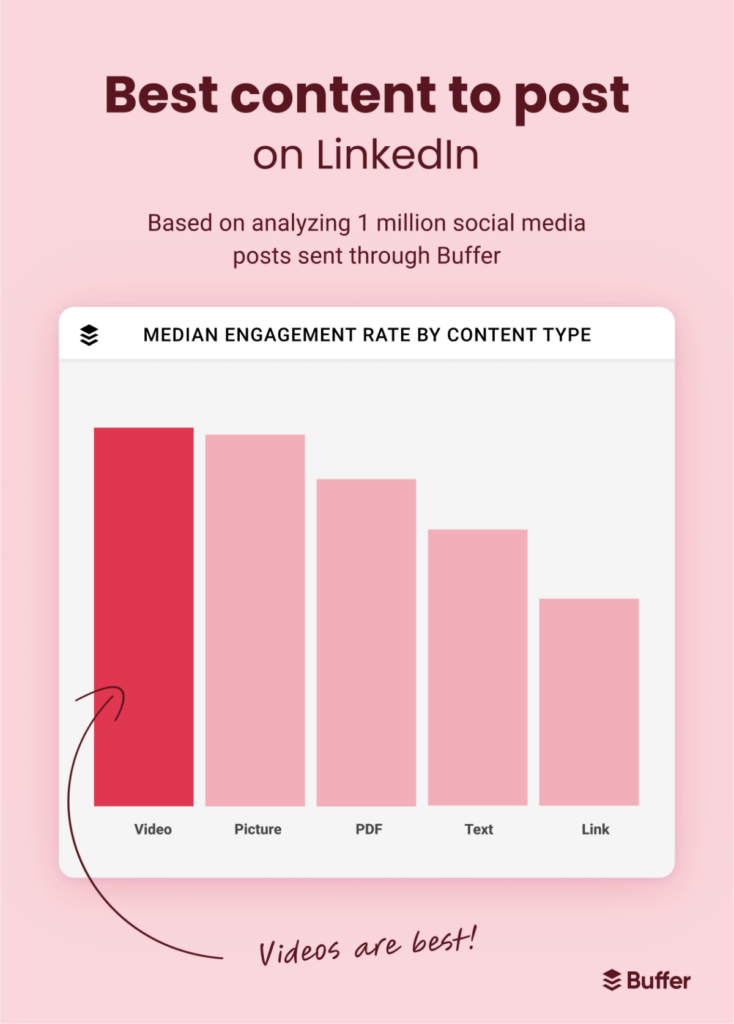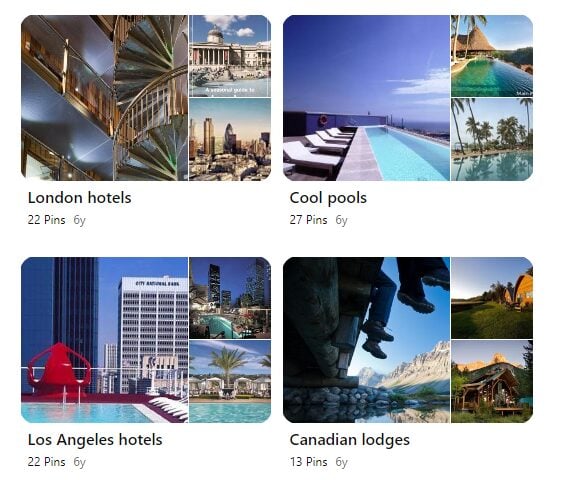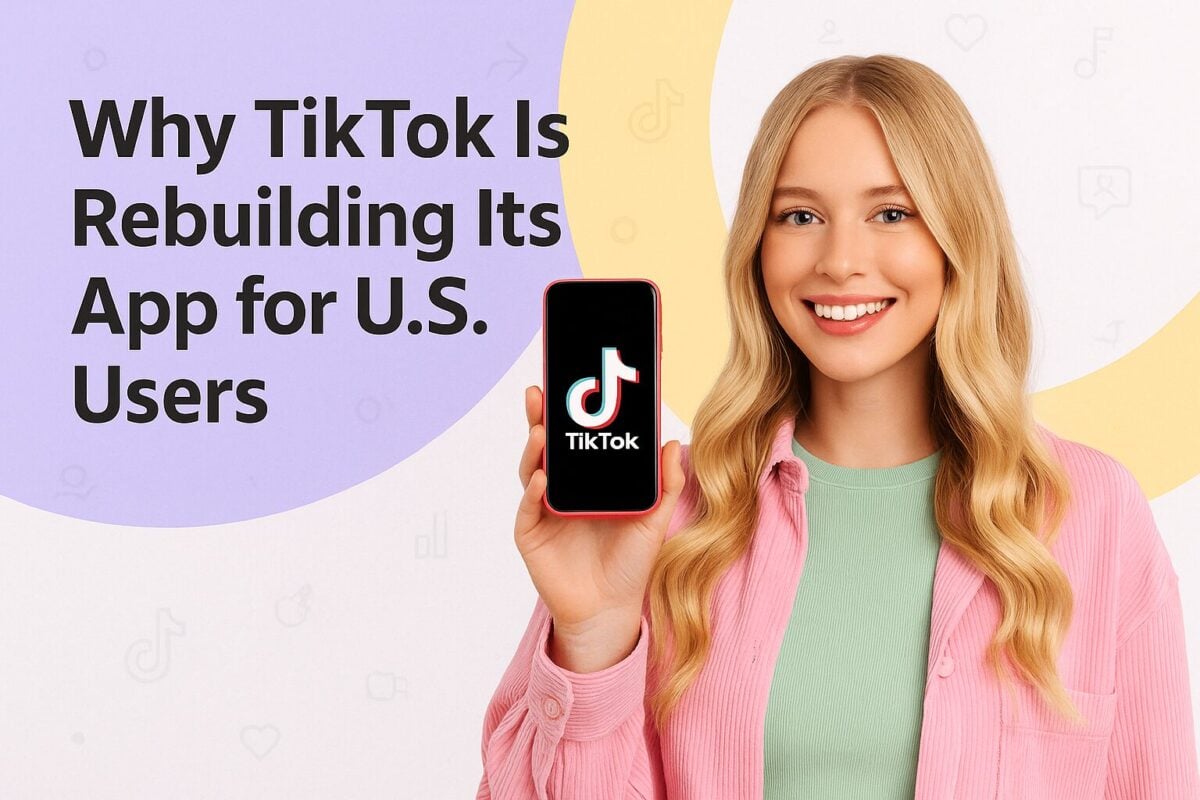As the consumer demographic is changing—with millennials and Gen Z buyers making up the majority of the market—businesses need to adapt their digital marketing strategies to reach these audiences. While their older counterparts were perched in front of TV screens and could be reached via print adverts, these groups are more accessible through social media and online advertising.
The majority of the world, 5.17 billion people to be precise, uses social media. In 2017, the number of social media users stood at almost half at 2.73 billion, indicating the swift adoption of social media in the past few years.
So, it's imperative to make social media a component of your marketing campaigns. The guide covers the latest social media marketing strategies to not only reach your audience but also be relevant in this dynamic space.
Create a Powerful Social Media Strategy in 10 Steps:
- Create a Powerful Social Media Strategy in 10 Steps:
- How to create a social media marketing strategy in 9 steps
- 1. Create a Social Media Marketing Plan
- 2. Define KPIs And Metrics to Track Success
- 3. Incorporate Social Media Trends in Your Content
- 4. Post Platform-Specific Content
- 5. Engage With Your Audience
- 6. Create Diverse Content
- 7. Repurpose and Reuse Content
- 8. Collaborate With Social Media Influencers
- 9. Use AI in Social Media Campaigns
- 10. Track Your Social Media Marketing Results
- Conclusion
- Frequently Asked Questions
How to create a social media marketing strategy in 9 steps
There was a time when the social media landscape was ruled by Facebook and YouTube. While both of these platforms still have a massive audience, the trends have changed.
Video, particularly short-form video, does much better now than images or text posts. Influencer collaborations have also become common in social media marketing.
The advent of AI has further transformed the space. We've kept all these things in mind to create this list of social media marketing strategies for businesses.
To help you get started, we’ve put together a comprehensive social media strategy template that covers all the essential steps for success.
Download Social Media Strategy Template
1. Create a Social Media Marketing Plan
It takes a few minutes to set up a TikTok or Instagram account. Another minute, and you've posted your first video or picture.
While this may work for personal accounts, it's not the best approach for businesses. Instead, you need a plan to base all your actions on.
Set Goals and Objectives
Your social media marketing plan should start with objectives. What do you want to achieve through social media?
For most brands, it's recognition. They want more people to know about their products or services. More so, they want their followers to further spread the word because social proof and word-of-mouth marketing are ultra-effective.
That's why Scott Cook, the co-founder of Intuit, said,
"A brand is no longer what we tell the consumer it is - it is what consumers tell each other it is."
Whatever your goals might be, make sure they are SMART. Simply put, they should be Specific, Measurable, Achievable, Relevant, and Time-bound. For example, ''increase engagement rate by 50% on all platforms'' isn't exactly a SMART goal since it doesn't specify a timeframe or the current engagement rate.
Instead, it could be rephrased as ''increase Instagram engagement from 10% to 30% within 3 months''. A SMART goal gives you more to work with. In this case, you have a specific platform and metric, a timeframe, and a baseline to measure your progress against.
Research And Understand Your Target Audience
It's important that you know as much as possible about your target audience. Who are they? What kind of content do they engage with? When are they most active on Instagram?
Perform an in-depth analysis of your audience characteristics, such as age, gender, location, interests, and behaviors. Then, create buyer personas based on these distinct characters. Segment these personas into groups and create personalized content for each group.
As Rocío Arrarte, EMEA senior marketing manager at Diligent, explains,
"Great marketing means knowing your audience, talking to your target personas, and building your content strategy around them."
For example, a skincare brand may have two types of buyers: older women looking for anti-aging products and younger women interested in natural skincare. The content that resonates with the older audience may not necessarily appeal to the younger one. When you segment both groups and create different, targeted content for each of them, you really hit the message home.
Conduct A Competitive Analysis
The competition on social media is fierce, with every brand trying to grab the attention of potential customers. Identify your biggest competitors and analyze their social media presence. Here are some factors to look at:
- Platforms they use
- Type of content they post
- Frequency of posting
- Engagement rates on their posts
- Hashtags they use
- How they interact with followers
Use this data to guide your social media marketing strategy. For example, you may notice that videos get the highest engagement for all your competitors. You can then incorporate more video content into your strategy.
Social media competitor analysis software tools simplify this process. For example,the Sprout Social Listening tool offers a side-by-side competitor comparison of metrics like sentiment, engagement, and impressions.
Brandwatch is another great tool that offers advanced social listening and competitor analysis features. You can use it to monitor your competitors' online mentions and analyze their sentiment and reach.
Choose the Right Platform for Your Brand
After the objectives, specify the platforms you'll use. The platform selection is based on audience demographics.
You could go ahead and try to establish a presence on five to six platforms at once, but it gets chaotic and overwhelming pretty quickly.
Instead, focus on two to three platforms where your target audience is most active.
Facebook and Instagram are great for B2C businesses, while LinkedIn is more suited for a B2B audience. TikTok has a younger user base, making it perfect for companies targeting Gen Z.
Comparing Social Media Marketing Platforms
Professional Tip: If you're unsure which platforms to choose, we've compared all major social media platforms in this article that will guide you: Comparing Social Media Platforms.
Decide the Type of Content You Will Publish
You don't have to settle for one kind. Instead, use a cocktail of:
- Images
- Videos
- Text posts
- Infographics
- Testimonials
- Contests
- Interactive Media such as Polls
- UGC
Then, analyze which of these content types yield better results, and then create more of those.
Tide Laundry's Instagram page is a good example here. You'll see a mix of informational posts, promotional content, UGC, brand events, and celebrity endorsements.
2. Define KPIs And Metrics to Track Success
Determine which key performance indicators (KPIs) and metrics you will use to track the success of your social media marketing. The KPIs you select should be in accordance with your objectives.
For example, if your goal is to increase brand awareness, you may track metrics such as reach, impressions, and engagement. If your objective is to drive website traffic, focus on click-through rates and conversions.
The metrics you select will also depend on your overall strategy. For a B2B social media marketing strategy, the focus may be on generating leads and conversions, while for a B2C strategy, reach and engagement may be more important.
Avoid focusing on vanity metrics since they create a flawed perception of success. Follower count is one such metric. A high number of followers does not necessarily mean that your social media marketing efforts are successful. The right alternative for this metric is engagement rate, which measures the interaction between your brand and your followers.
Lori Taylor, VP relations manager at Empowers, puts this into perspective by saying,
"Going viral is not an outcome; it’s happening. Sometimes it happens; sometimes it doesn’t. Just remember, fans are vanity, and sales are sanity."
Here are some common social media KPIs to track:
- Reach: The number of unique users who see your content.
- Impressions: The total number of times your content is displayed, including repeat views from the same user.
- Engagement Rate: Total interactions (likes, comments, shares) divided by reach or impressions.
- Click-through Rate: The percentage of people who clicked on a link in your post or ad.
- Conversion Rate: The percentage of followers who take a desired action, such as signing up for your newsletter.
- Sentiment: The overall sentiment (positive, neutral, or negative) towards your brand on social media.
- Brand Mentions: The number of times your brand is mentioned on social media.
- Share of Voice: The percentage of conversations about your industry or niche that mention your brand.
Check out our guide on social media marketing tools to find the right solution for KPI measurement and analysis.
3. Incorporate Social Media Trends in Your Content
Social media trends, be it TikTok dances or pop culture references and sounds, get a lot more traction than generic marketing posts.
Hopping on these trends shows your customer base that you're relevant and up to date with what's happening.
It also makes your content more shareable, increasing your reach organically.
Take Ryan Air as an example. The company is an excellent role model to follow when it comes to staying on top of TikTok trends.
For example, here's a post in which the company is following the TikTok trend of using a filter to find out which celebrity you look like.
Here's another post that's inspired by Among Us, a popular video game that went viral and kept TikTok users hooked.
Other posts from the airline are also either memes or relatable content that fits TikTok's conventions, such as POV (point of view) videos or using popular audio.
The result? Ryan Air gets over 50,000 views per post on average. That's fantastic reach for a B2C brand that mainly targets air travelers.
Ready to Go Viral with Trend-Driven Content?
Launch your TikTok ad campaign today and start connecting with audiences through the trends they love. Click here to get started and boost your brand’s reach!
4. Post Platform-Specific Content
What if a brand posted TikTok-viral trends or meme posts on its LinkedIn page?
Such content would seem out of place, right? That's because it is.
Every social media platform has its unique features and audience. Your content should adapt to each one accordingly. You can either use industry research or analytics from your own platforms to find out which content type works best on each social media account.
We'll do a quick analysis below.
LinkedIn is where all the corporate buzz is happening. It's ideal for B2B companies, career-related posts, and networking.
The content that usually works best on LinkedIn is educational content and thought leadership pieces. You can also post company updates.
According to Blair Huddy, Founder & CEO at Hudson Davis Communications,
"Long form posts and picture posts are the highest performing on the platform, followed by polls, newsletters, events and LIVEs, group posts/discussions, and articles. Video content does NOT perform well at all. Infographics are moderately effective, as are document posts. LinkedIn recently added a function where you can turn articles into paid ads and those perform exceptionally well."
You can test different content types and then take performance-driven decisions for future publishing.
Alternatively, you can use existing research to guide your decision. For example, Buffer's data shows that videos do best on LinkedIn. Images are behind with just a 0.1% engagement difference, followed by PDFs, text posts, and links.
Businesses catering to older millennials and Gen Xers should focus on Facebook, as these generations make up the majority of its user base.
Again, video content does best here. Pictures and text posts are also impactful. Interestingly, if you're planning to create a link-only post, Facebook is the best platform for it. Link-only posts, such as blog posts, tend to get more clicks and engagements on Facebook than on X and LinkedIn. You can also run ads on the platform to enjoy its high conversion rate of 9.21%.
On Instagram, Reels tend to do best for businesses and personal brands alike. According to Instagram reports,
''On Instagram, over half of people interact with a reel (by liking, commenting or sharing) at least once a week, and Reels make up more than half of content reshared in messages.''
Photo posts make up most of the content posted on Instagram, while videos and carousel posts are gaining popularity. Brands that want to get insights from their customers and also run Q&A sessions, conduct polls, and put up question stickers in their Stories.
TikTok
TikTok is primarily a video-sharing platform, so it makes sense for video content to be the best format to post there. But what kind of video content performs the best?
Over 70% of respondents to a survey said that their favorite type of content to watch on TikTok is comedy, while 58% like watching dance videos, and 48.4% enjoy video tutorials.

Audience’s favorite content to watch on TikTok
Other video types popular on the platform are challenges, lip-sync videos, lifehacks, and memes.
Capture Attention with TikTok’s Most Popular Content!
Launch your ad campaign on TikTok today and engage viewers with the video styles they love—from comedy to tutorials and challenges. Click here to start reaching your audience!
5. Engage With Your Audience
Tom H. C. Anderson, a market researcher, recommends,
"Engage rather than sell … Work as a co-creator, not a marketer."
That's the key to social media marketing. Your followers are not just numbers; they are real people who want to connect with you and your brand.
Jay Baer, the founder of Convince & Convert, puts it wonderfully by saying,
"Activate your fans, don't just collect them like baseball cards."
The most obvious way to engage with your audience on social media is by responding to their comments. You don't have to respond to add 100 comments on a post but try to engage with at least a few comments each time.
Scrub Daddy responds to comments in a humorous and playful way, which aligns with the type of content the brand posts.
Similarly, Crumbl Cookies also responds to the top few comments on every post. The responses can be a simple Hi or a witty response.

Crumbl Cookies comment section
Even something as minor as an emoji shows that you are actively listening and engaging with your audience. It also helps you collect insights for future strategies. As Joei Chan, director of content at 360Learning puts it,
"There are a lot of opportunities that you can discover by listening closely to what your customers are saying."
Also, respond to direct messages you receive from your followers. Answer any questions they may have and acknowledge their feedback.
You can also host giveaways or run polls. Instagram Stories allow you to add polls and questions that your followers can answer. These are all fun ways to interact with your existing or potential customers.
6. Create Diverse Content
The more diverse your content is, the more people you can engage in your follower base.
Experiment with different types of content, such as images, videos, GIFs, infographics, and more. You can also vary content across platforms.
We found Booking.com's social media presence to be of inspiration in this regard. Starting with Instagram, the brand posts a lot of Reels, which is apt for the platform.
These Reels are often user-generated, which ultimately adds credibility to the content since it's created by the users themselves and not as marketing material by the brand. UGC is highly effective in B2C industries, since it allows customers to see real people using and enjoying the product or service.
That's why Booking.com puts up user-generated pictures and videos of unique properties in different locations, giving a visual treat to their followers while also providing social proof of their offering's quality and popularity.
On Pinterest, Booking.com mainly focuses on creating image-based content. The content style is also very Pinterest-esque, with utmost attention to aesthetics.
You'll find hotel, travel, itinerary, and food-related inspiration on the brand's Pinterest account.
Boooking.com's TikTok account is quite like its Instagram page, with a lot of video content. Again, we see UGC and TikTok-viral trends being used in their content strategy.
The take-home is to diversify your content. You don't have to go all in from the get-go. Start with new formats, one at a time.
Engage Your Audience with Diverse Content!
Start your TikTok ad campaign and showcase your brand with a variety of engaging formats—from UGC to viral trends. Click here to diversify your strategy and grow your reach!
7. Repurpose and Reuse Content
Repurposing and reusing content serves two purposes. First, it saves you time and money since you can use the same content in multiple places. That makes content repurposing a must-have in a social media marketing strategy for small businesses since these brands usually don’t have the monetary or human resources to produce new content regularly.
Second, content reuse helps you reach a wider audience. You can take one large piece of content and break it down into smaller pieces for different platforms.
People who follow your brand on different social media apps also develop a sense of familiarity when they see similar content across platforms.
Elf Cosmetics is often seen reusing the same content across its social media accounts. Recently, the brand introduced its pimple patches using a creative video that got over 15 million views on TikTok.
@elfyeah minimize your most monumental zits ? with Stick It To Zits Pimple Patches ? available in the TikTok Shop #elfSKIN #eyeslipsface #stickittozits #pimplepatches #skincare ♬ original sound - e.l.f. Cosmetics
Since the content did so well on TikTok, the brand reused the video on its Instagram and Facebook accounts, too.
You can do the same with your content. If you notice that a post or video gained tremendous traction on one platform, try repurposing it for other platforms to reach a wider audience.
8. Collaborate With Social Media Influencers
According to our State of Influencer Marketing report, influencer marketing is a $24 billion industry. The same report also found that 84.8% of marketers believe influencer marketing to be effective.
With such a high level of success, you have to incorporate it into your social media plan. That's why 59.4% of marketers plan to increase their influencer marketing budget moving forward.

Influencer marketing budget allocation
To make sure your budget spending is resulting in a decent return on investment (ROI), you must have a game plan. First, choose the right influencers.
But how do you decide what ''right'' is for your brand?
Take a look at your industry and audience. Let's say you're a company that makes home security gadgets. Your target audience are home owners and pretty much anyone who lives in a house or apartment.
What kind of influencers will be right for your campaigns? You want to collaborate with lifestyle creators. Since these influencers are already creating content around home decor and DIY they likely have an audience that is interested in creating a safe and secure home.
You can also work with mommy bloggers and TikTok creators. These influencers have an audience consisting of parents who have the spending power and motivation to buy your product.
Similarly, you may work with tech reviewers who specialize in security technology. They can give your product a thorough and credible review, increasing the chance of people believing in your product.
Influencer marketing is particularly helpful for eCommerce businesses, as influencers can show the utility of their products to the audience. For example, SKIMS is Kim Kardashian's apparel and shapewear eCommerce brand that targets women of all shapes and sizes. The brand collaborates with fashion influencers who already have a fashion-centric following.
@skims The Ultra Fine Lace Dress. ?? @Alexandra Cooper for the #SKIMS ♬ original sound - SKIMS
Since most of the brand's products are female-focused, their influencer partners are also predominantly women. The same is true for Nordstrom. Being an apparel store, the brand partners with fashion and lifestyle influencers.
OxiClean, a company that sells stain-removing products, is another good example. The brand partners with lifestyle creators and mom-run accounts since these influencers are likely to have a strong influence on household purchase decisions.
The next step is deciding what type of content you want from these influencers. Do you want a series of sponsored posts on social media? Or do you want them to create video reviews and tutorials showcasing your product's features?
Whatever type of content you choose, it should be according to the influencer's personal brand and their audience's interests.
If working with high-profile influencers is out of your budget, don't worry. Micro-influencers are just as impactful, if not more, due to their small yet super-targeted audiences.
9. Use AI in Social Media Campaigns
If all your competitors are using AI, it makes sense for you to do so, too.
There are many ways to leverage AI tools for your social media campaigns. The most evident is the use of AI for social media content creation.
HubSpot's report shows that marketers save over 3 hours creating per piece of content with AI. Suppose you want to create a social media visual.

Time saved using AI
You can simply use a tool like Adobe Firefly. It will create a visual based on your prompts.

Adobe Firefly
The good old Canva also has an AI image generator now that you can use to make thumbnails for your YouTube videos or images for your Instagram posts.
Tools like Synthesia make video generation a breeze. The tool not only creates a video based on your text command but also lets you add a voiceover to it. There's a huge library of stock footage to choose from to make your videos more dynamic.

Synthesia AI video creator
AI also helps analyze social media data. You can either collect data directly using AI tools or use these tools to analyze the data from your social media platforms' built-in analytics dashboards.
For example, Sprout Social ''listens'' to hundreds of thousands of comments and messages across all your social media networks. The tool's Query Builder uses AI to extract key insights from these conversations across audience demographics, keywords, topics, and themes.

Sprout Social Query Builder
Sprout Social's ViralPost algorithm further analyzes your audience's engagement patterns to show you the optimal times to post content.
Similarly, you can use AI chatbots to create conversational AI experiences for your customers. These chatbots can be used for lead generation, customer support, sales, product recommendations, and more.
Being active at all times, AI chatbots can provide prompt responses to your customers, regardless of the time of day or the volume of inquiries.
For example, CoSupport is an AI chatbot that supplements the efforts of customer support agents by providing query responses using your company's knowledge base. It also collects and analyzes customer data for smart recommendations and insights.
So, it's up to you to decide to what extent you want to automate your social media marketing efforts with AI.
Just make sure you're not relying on AI 100%. Human creativity is paramount to human connections. So, you want your social media team to be actively involved in the process and not just rely on AI tools to do all the work.
HubSpot’s report further found that 76% of people believe AI and automation should be used in professional roles, but over-reliance on technology should be avoided.
10. Track Your Social Media Marketing Results
Possibly, the most important social media strategy is to measure your results and do it often.
Dallas Lawrence, the VP of digital media at Levick Strategic Communications, says,
"Monitor, engage, and be transparent; these have always been the keys to success in the digital space."
You can't improve what you don't measure, and social media is no exception.
We live in a digital age where data is readily available, and social media platforms provide all the tools you need to track your progress. A good place to start evaluating your performance is by heading over to the platform's analytics dashboard.
You can see account-by-account analytics on Facebook, X, Instagram, TikTok, and LinkedIn.
Some of the metrics you should pay close attention to include engagement rate, reach, impressions, clicks, and conversions.
You can also use third-party tools that offer a more in-depth analysis. For example, RivalIQ is a handy social media analytics tool that provides custom reports for all channels you're present on.

RivalIQ home page
The tool also offers features like social post analysis, social listening, competitive analysis, and social media listening.
Since you can see a comprehensive view of your entire social media presence in one place, it's easier to see where you're excelling and where you need to improve.
Conclusion
There are no set standards for the social media strategies you MUST be using or the tools you HAVE to incorporate.
Social media marketing is a fluid space, and what works for one brand may not necessarily work for another. Some companies, as big as Netflix, have given up on certain platforms and tactics because they just didn't work for them.
For example, Netflix doesn't post on its Facebook page anymore despite having millions of followers. Instead, it focuses on X and Instagram.
You should also follow suit. Take regular note of your performance and then mould your social media marketing strategies accordingly.
Frequently Asked Questions
What is a social media marketing strategy?
A social media marketing strategy is a plan that outlines the tactics a business will use to achieve its marketing goals on social media platforms. This can include influencer marketing, user-generated content, paid advertising, hashtag campaigns, video marketing, and giveaways.
Why is it important to create a social media marketing plan?
Creating a social media marketing plan is essential because it provides a structured approach to managing your social media presence. It helps in setting clear goals, identifying target audiences, selecting appropriate platforms, and measuring success, ensuring that all efforts are aligned with business objectives.
How do I set effective goals for my social media marketing?
Effective goals for social media marketing should be SMART: Specific, Measurable, Achievable, Relevant, and Time-bound. For example, instead of aiming to "increase engagement," set a goal like "increase Instagram engagement from 10% to 30% within 3 months."
What types of content should I include in my social media strategy?
Your social media strategy should include a variety of content types such as images, videos, text posts, infographics, testimonials, contests, interactive media like polls, and user-generated content. Analyzing which content types yield better results can help refine your strategy.
How can I measure the success of my social media marketing efforts?
Success in social media marketing can be measured using key performance indicators (KPIs) and metrics such as reach, impressions, engagement rate, click-through rate, conversion rate, sentiment, brand mentions, and share of voice. Tools like platform-specific analytics dashboards and third-party tools like RivalIQ can help track these metrics.










